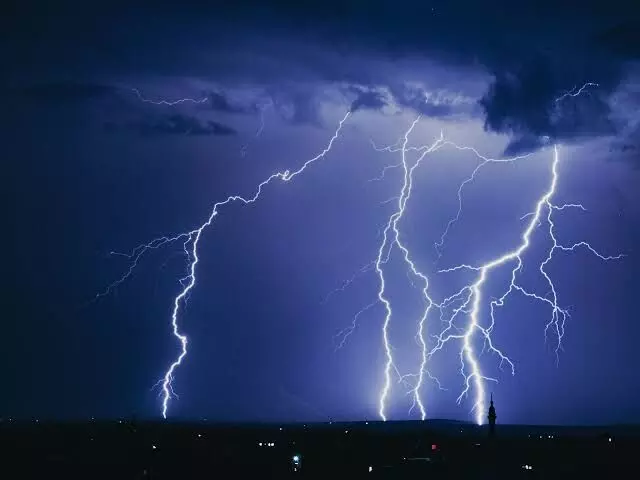
Longest lightning bolt on record set sky ablaze in three US states
text_fieldsThe World Meteorological Organisation has confirmed that a lightning bolt stretching over 700 km across three states in America has set the world record for the longest lightning bolt on record. The "megaflash" has been measured at 768 km, beating the previous world record by 60 km.
The single flash of lightning was recorded during a U.S. storm in April 2020; the bolt was so long it stretched over three states, namely Texas, Louisiana and Mississippi.
The new record zaps the previous one, which was set in Brazil in 2018. The Brazil flash also broke the word record for longest-duration as it lasted a stunning 17s.
"Megaflashes" are lightning bolts which travel unusually long horizontal distances across the sky, a phenomenon which is now better understood by scientists thanks to advances in satellite technology according to scientists.
One of the first global maps of lightning activity was published in 2001 with data from the Optical Transient Detector (OTD) on the commercial OrbView-1 satellite and the Lightning Image Sensor (LIS) on NASA's TRMM satellite. Two decades later, a second LIS mounted on the International Space Station (ISS) is adding to long-term records and making newer, better maps of global lightning activity, NASA's 'Earth Observatory's blog said.
"One of the exciting things about having ISS LIS data is that we're starting to be able to compare what is happening with lightning now to what we saw in the 1990s with OTD, and with what we saw in the 2000s and 2010s with TRMM LIS," said Tim Lang, an atmospheric scientist at NASA Marshall on the blog. "The satellites also have a built-in advantage over ground-based networks because we don't have gaps in the network and we have measurements over the oceans."
The ISS LIS, the TRMM LIS, and OTD were used to build "lightning maps" from compiled data the satellites collected although the TRMM LIS was restricted to the tropics only. The TRMM LIS collected data between 1997 and 2015; OTD was operational between 1995 and 2000; and ISS LIS has been flying since 2017.
With the launch of the ISS LIS, data from further north has also become available, enabling scientists to build more accurate data for lightning and climate patterns around the world.






















